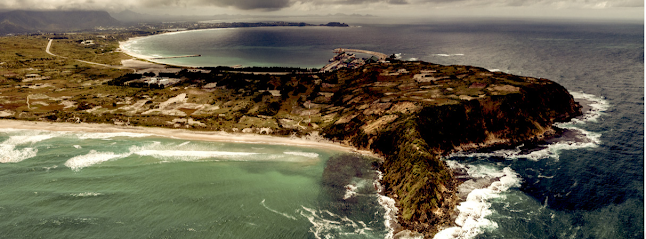Rio Tinto must repair the damage caused by their Madagascar mine (commentary)
- The giant mining conglomerate Rio Tinto has a large ilmenite mine which abuts wetlands and lies in the vicinity of a river and two lakes in one of the poorest regions of the fifth poorest country in the world, Madagascar.
- Though it’s a large employer in the region, activists say that the company’s Qit Minerals Madagascar mine contaminates water supplies and reduces food security for the vulnerable local population.
- “We [are] calling for the creation of a grievance mechanism which will truly respond to people’s concerns, and that complies with international standards – not only by giving them financial compensation, but by affording them their dignity,” a new op-ed says.
- This post is a commentary. The views expressed are those of the author, not necessarily of Mongabay.
Rio Tinto’s sprawling Qit Minerals Madagascar (QMM) mining operation is situated in one of the poorest regions of the fifth poorest country in the world.
It lies in an area near Fort-Dauphin on the far southeastern coast of Madagascar, where 91% of people live in poverty and 80% of the rural population wholly depend on natural resources for their survival.
The ilmenite-producing QMM mine has made their lives immeasurably harder, pushing them deeper into poverty. And it has done so in various ways which have been comprehensively documented over many years, including in research we at Publish What You Pay-Madagascar produced in 2022.
The mining operation has contaminated water, with uranium levels found to be 50 times higher than the WHO safe drinking water guidelines in some parts of the waterways and lakes adjacent to the mine, which the majority of the 15,000 people living near the site use for drinking and domestic purposes.

Meanwhile food insecurity has intensified, as soil fertility has decreased and local peoples’ access to land has been reduced – meaning fewer pastures for cattle.
These hardships were compounded a year ago, when the mine’s tailings dam failed twice.
To prevent the dam’s total collapse, the QMM operations released a million cubic meters of mine wastewater. In the following days, hundreds of dead fish were found floating in downstream lakes, precipitating a fishing ban which hit local fisher folks’ livelihoods like a hammer blow.
This, in turn, led to months of conflict.
In May 2022, a conflict resolution process was brokered and 8,778 villagers submitted claims against QMM.
See related: On hazardous mine tailings dams, ‘safety first’ should be the rule

“Gagging order”
Yet, instead of trying to resolve tensions, QMM’s is in danger of inflaming them.
In exchange for ending their protests, villagers were promised compensation from QMM, not just for the period of the fishing ban, but for a decade of damage the mining operation has inflicted on them.
The catch however, came in the form of a “gagging order” on the community representatives participating in the talks with QMM. Locals were told explicitly that they could not discuss the agreement with QMM outside the negotiating room, and it also seems that multiple QMM documents requiring their signatures were not first explained to them, nor were they given copies of the documents.
Although we understand that QMM offered to pay for legal assistance, villagers have no confidence in processes paid for by the mining company – including the environmental monitoring of the mine by the National Office of the Environment, which locals deem to be compromised.
The Malagasy people whose land and livelihoods have been destroyed, should – at a very minimum – be afforded accountability and transparency.
The neglect they have faced has not just been at QMM’s hands, but at the government of Madagascar’s. If the government cared about them, they would have commissioned an independent assessment of the mine’s environmental impacts and monitored QMM’s operations.

When I interviewed local community members around QMM last year, an elderly woman told me that she thought they were not considered human beings anymore. “Some people invest in protecting the forest, or the animals – the lemurs and tortoises. But no one invests in the protection of our population. So, we don’t have food on a daily basis and the water we’re using is potentially contaminated,” she said.
The question, then, is what is QMM is willing to do in order to repair what they have destroyed?
We aren’t telling them to cease their activities, because we know that despite all the wrong that they’ve committed, the region still needs mining for its development.
What we are calling for, among other things, is an independent audit of the compensation process, the water quality and mine tailings management.
We are also calling for the creation of a grievance mechanism which will truly respond to people’s concerns and that complies with international standards – not only by giving them financial compensation, but by affording them their dignity and entitlements. This is something which for the past 15 years they’ve been denied.
The story of QMM’s mining operation is one of asymmetrical power between the company and government on one hand, and the local community on the other.
It is one which must not be repeated.



0 Comments